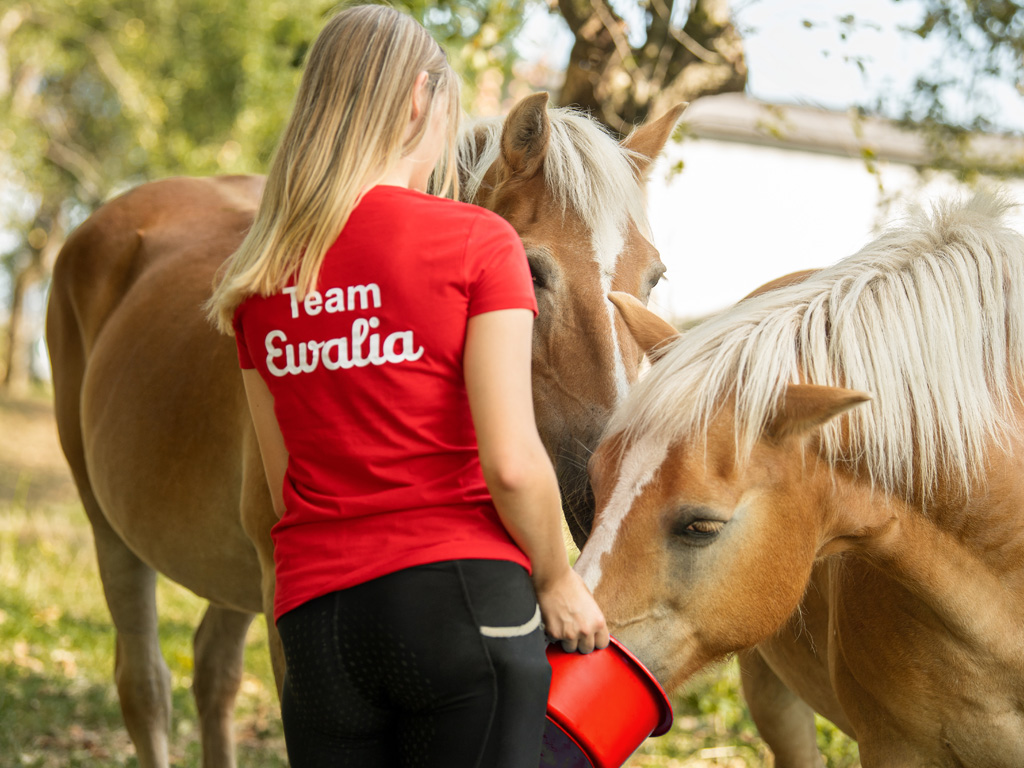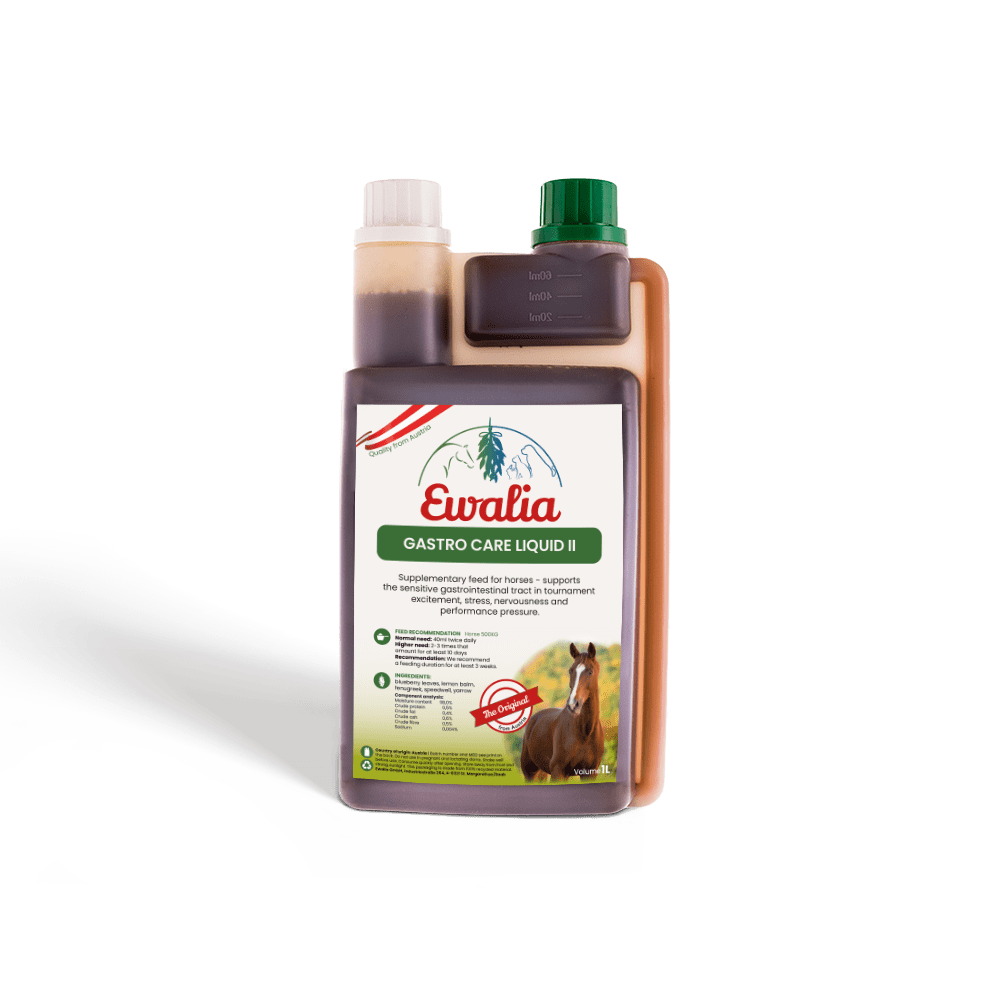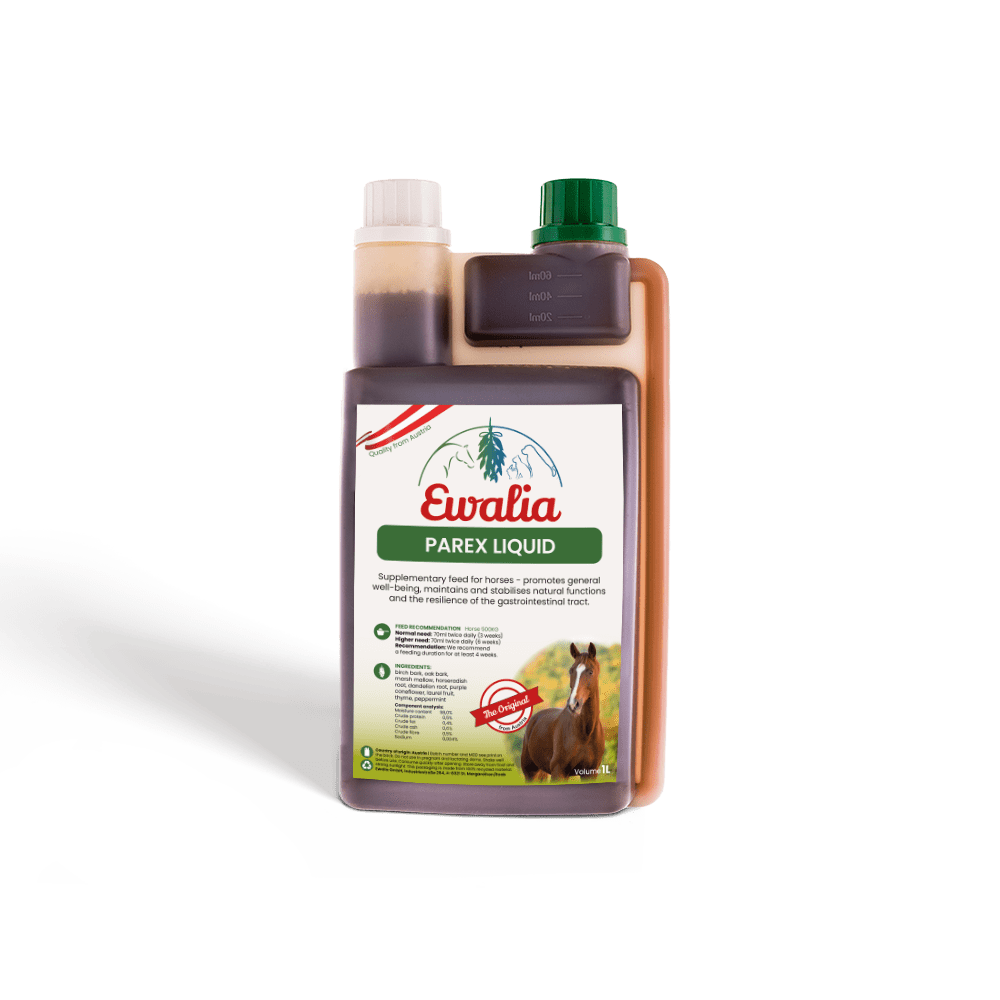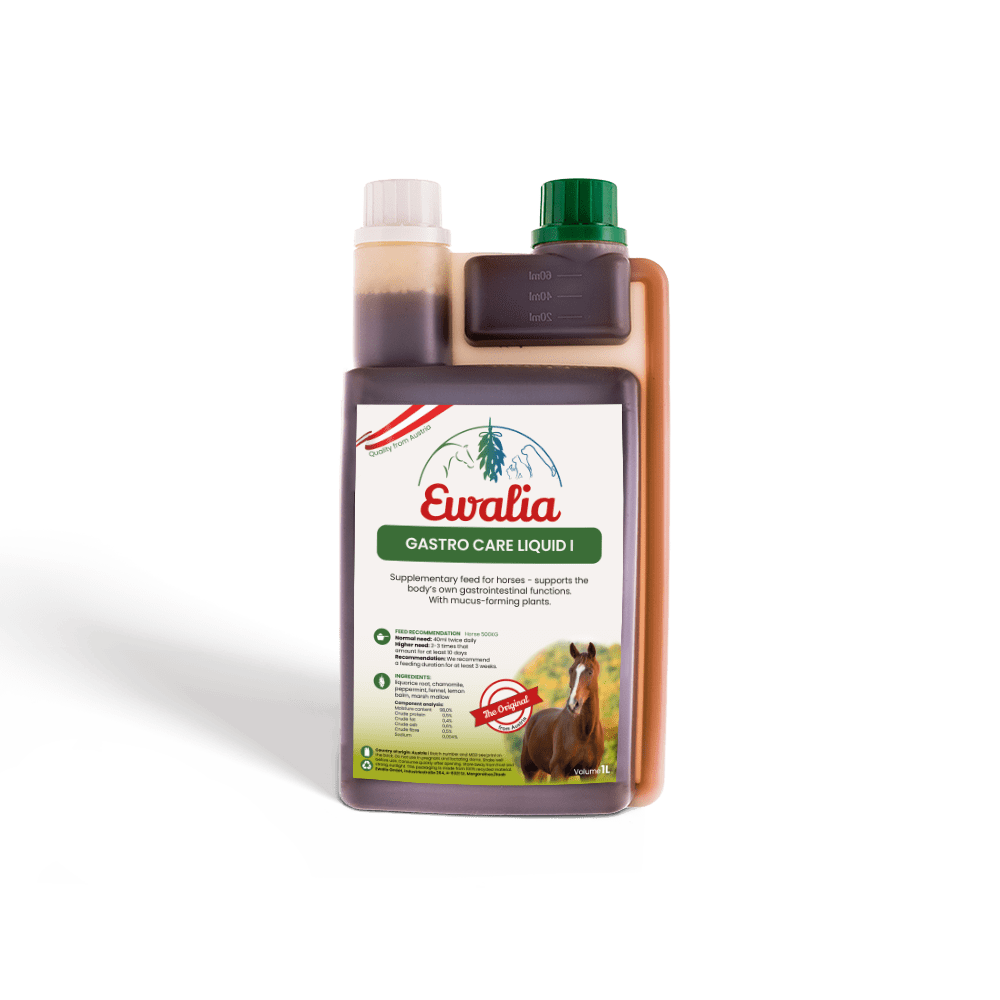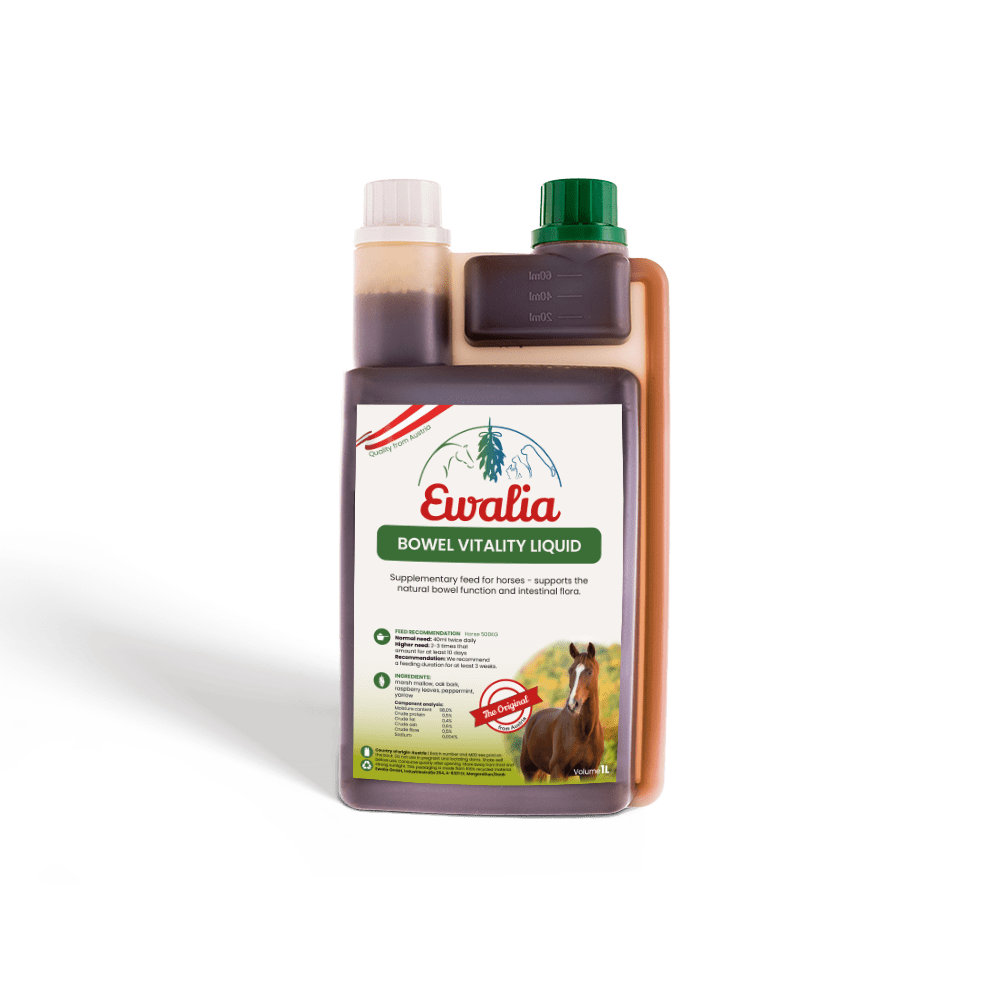What is analysed in a faecal sample?
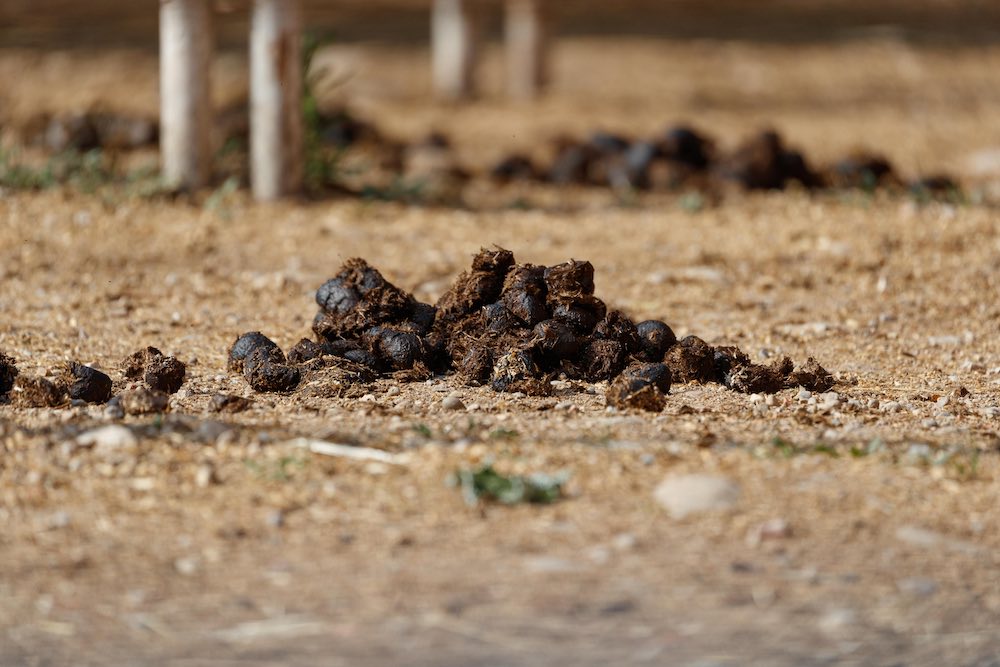
The laboratory analysis of faecal samples is a common process for determining if a horse has an intestinal parasite infection. However, a horse's faeces contain other important information on its health. Collecting a faecal sample is easy! Learn here what you should know and what tests can be done on faecal samples.
How are faecal samples collected?
Collecting a faecal sample from a horse is easy: horses excrete up to 20 kg of faecal matter daily, leaving droppings 5-12 times a day in intervals of approx. 2.5 hours. Horse owners can collect faecal samples themselves by noting the following:
- Collect from fresh droppings. You can use older faeces if necessary, but avoid ones that are more than 12 hours old.
- Collect the sample by wearing a disposable glove or a plastic freezer bag over your hand, ideally from a place where the manure has not come in contact with other materials like earth or bedding. A handful of manure will suffice. Laboratories need about 40 to 50 g of faecal matter for testing.
- Pull the glove or freezer bag inside out so that the manure is inside, and tie securely.
- For lab testing, the sample must be labelled with the horse's name and the date it was collected, ideally on a label affixed directly to the glove or bag.
- Then keep the sample chilled to 4-8°C, either in a cooler bag or in the refrigerator.
- Store the sample at a cool temperature until it is shipped.
A vet can obtain an absolutely pure faecal sample directly from the horse's rectum. However, this isn't necessary for most testing purposes!
Important when shipping faecal samples
The sample should be delivered quickly in a tight, unbreakable container or brought personally to the lab. Your vet will have special containers for this purpose.
Tip: For a speedy delivery, ask your attending vet if the clinic uses courier services to deliver to the lab on specific days and submit the sample then! Some vets carry out their own faecal testing to look for parasites.
How long will a faecal sample keep?
The sooner a faecal sample arrives at the lab, the more it can tell you. Transport times longer than four days and the impacts of high temperatures can lead to false results. Faecal samples for microbiological tests may deliver false results after just one or two days due to bacterial growth during transport and storage!
What is serial faecal sampling?
A serial faecal sample involves samples being taken from a horse over three days. The samples are package individually and labelled. These are recommended when the samples are to be examined for hard-to-detect parasites like tapeworm or liver fluke. Serial faecal sampling will likewise provide more information than a single sample when looking for the causes of disease.
Recognising digestive disorders through observation
Horse faeces can provide information about possible digestive disorders, even when examined with the naked eye. However, this information must always be viewed in connection with diet. The faeces of a healthy horse will be brown or greenish brown, depending on the feed, and excreted in shiny, well-formed balls. Anomalies can be easily seen in changes to shape, water content, colour, or smell.
- Small, dry faecal balls point to slowed passage through the intestines.
- In severe cases, for example impaction colic, the faeces are covered with whitish or yellowish mucous threads.
- Soft, unpleasant smelling faeces indicate a gut flora imbalance.
- Black, foul-smelling faeces suggest an inflammation of the stomach lining.
When divided, the faeces of a healthy horse will display a fine, even structure. Individual grains and longer plant parts that "got through" pose no reason to worry. However, if larger amounts of coarse feed particles are present, it's time for a dental check-up!
What faecal testing can my vet do on-site?
Sand
If a horse is kept and fed in a sandy paddock or turned out in an overgrazed pasture, there is a danger that it may consume too much sand with its feed and subsequently fall ill from sand colic. Sand in faeces can be determined right in the stable or at the vet's surgery. Place the droppings in a plastic glove with some water and slosh it around: any sand present will settle to the bottom.
Size of faecal particles
Dissected faeces are washed out with a strong jet of water over a sieve. If large amounts of feed particles (of about 4 to 5 mm) remain in the sieve, this indicates that roughage is not being adequately broken down. If indigestible substances like wood, bark, or sawdust from bedding is being ingested, this will show up here too.
Testing pH values in faeces
The pH value can be determined on site by using a pH indicator paper after soaking the faeces in distilled water. A value < 6 signals increased fermentation of carbohydrates or hyperacidity in the gut.
Determining the presence of worms through faecal testing
A parasitological examination can clarify
- which parasites are colonising the horse's gut
- to what degree the horse is wormed.
Determining the presence of worms involves different laboratory procedures.
In faecal flotation tests, the faecal material is mixed with a saturated salt or sugar solution and centrifuged. A sample is then taken from the surface with an inoculation loop and examined under a microscope. This procedure is used to determine the presence of eggs from strongyles, equine roundworms, and nematodes (roundworms). The level of parasite eggs is indicated as low, moderate, or high. Tapeworm eggs are harder to find, as this parasite species does not always lay eggs.
A faecal sedimentation test is used to isolate large parasite eggs. The faecal material is mixed with water and strained into a glass tube. The remains are rinsed several times and the liquid is dyed after removal of the sediment. This will show the presence of common liver fluke eggs.
The presence of lungworm larvae can be determined through a faecal Baermann test. Lungworms are coughed up and then swallowed by the horse, sending them into the digestive tract. For this test the faecal sample is strained over a funnel that is attached to a small, detachable tube. Water is poured into the funnel. The presence of water encourages the lungworms to leave the faeces and sink to the bottom so that they can be examined under a microscope.
Parasitological faecal examinations should not only be carried out when digestive disorders occur, but at regular intervals, even in horses with no symptoms. Veterinary laboratories recommend serial faecal testing for precise diagnoses.
Why count the number of parasite eggs in a faecal sample?
Knowing the type and quantity of parasite eggs is important for selective worming.
The stages of parasites can be counted microscopically through a special procedure known as the Modified McMaster Test. A defined amount of faecal material is floated in a counting chamber, and the result is recorded as the number of eggs per gramme of faecal matter. The exact value can be compared to earlier findings. Generally, 200 eggs per gramme of faecal matter is considered the upper limit, and a horse with more than that should be dewormed.
Important: This limit applies only to small strongyles. In the case of roundworms, deworming must be done even if a lower number is recorded. If one horse in a herd is found to have tapeworms, the entire herd must be dewormed!
Which pathogens can be determined through faecal testing?
If a bacterial infection is suspected, special bacterial tests can be used on a faecal sample to isolate the following pathogens:
- Salmonella can enter a horse's digestive tract through feed and water that has been contaminated with droppings from infected birds or rodents, causing severe diarrhoea. Its presence in faeces can be determined by cultivating a bacterial culture on a special culture medium.
- Clostridia: The toxin-producing strains Clostridium perfringens and Clostridioides difficile can be determined through cultures.
- Rhodococcus equi causes severe pneumonia and digestive disorders in foals. It can be determined through cultures and PCR testing of the faeces.
- A horse's faecal sample can also be used to diagnose rotavirus and coronavirus.
Can a faecal sample be used to determine a horse's intestinal health?
A microbiological examination of a faecal sample is the only way to determine which microorganisms are present in the last section of the intestine. However, it cannot be used to make conclusions about a horse's gut microbiome because there are no guideline values for beneficial bacteria in equine guts.
Even the gut microbiome of an individual horse will not prove to be consistently the same, as it will be influenced by diet, stabling, and the horse's current condition. Faecal examinations only provide a momentary glimpse!
Caution: The faecal sample sequencing offered by some companies has no scientific basis!
When should faecal testing be carried out?
Faecal testing is an efficient way to:
- determine a horse's degree of parasite infection
- determine intestinal parasite species and treat the horse accordingly
- in selective worming, to obtain comparative data on the worm infestation of individual horses and of the herd. Vets recommend that a horse's faeces be tested two to four times per year.
- test for the presence of vermifuges in individual horses. You'll find more on selective worming here.
- find possible causes for digestive disorders.
- isolate pathogens from bacterial infections of the digestive tract.
Sources
- https://vetscreen.de/kotuntersuchungen/
- https://www.tieraerzteverlag.at/vetjournal/darmflora-pferde
- https://laboklin.com/ch/vetinfo/weitere-laborinformationen/pferde-aussendungen/2020/october/
- Die Kotprobe – Möglichkeiten der Diagnostik
- https://www.entwurmungpferd.de/kotprobe-pferd/












